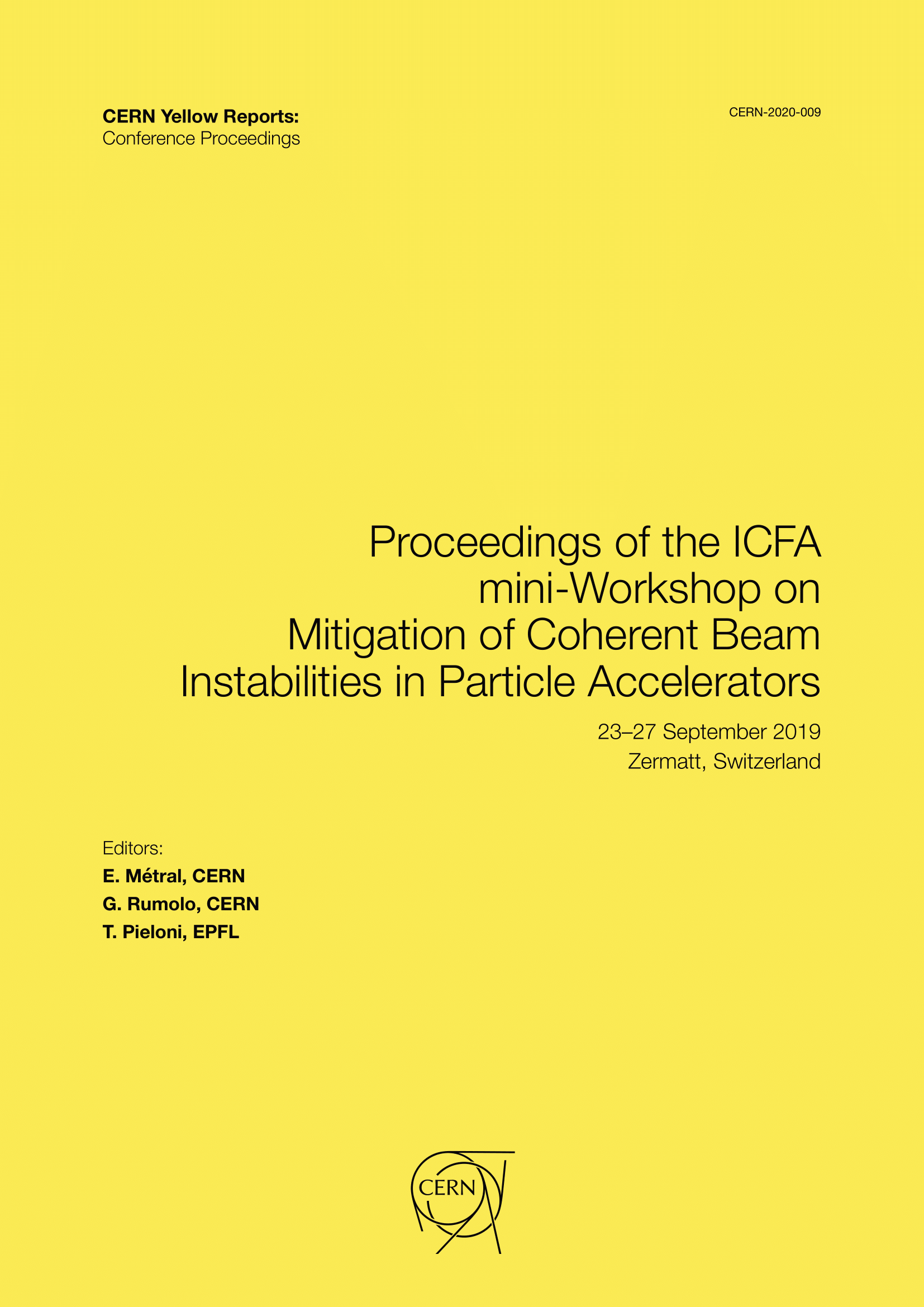Noise and possible loss of Landau damping through noise excited wakefields
DOI:
https://doi.org/10.23732/CYRCP-2020-009.262Abstract
The effect of transverse Landau damping in circular hadron colliders depends strongly on the bunch distribution. The bunches are often assumed to be Gaussian in the transverse dimensions, as it fits well to measurements and it is the expected effect of intra-beam scattering. However, a small change of the distribution can cause a loss of stability. We study the effect that external noise excites the transverse motion of the beam, which produces wakefields, which act back on the beam and cause a diffusion of incoherent particles. The diffusion is narrow in frequency space, and thus also in action space. Macroparticle simulations have shown a similar change of the distribution, which is only detectable in action space, not projected in position space. The narrow diffusion efficiently drills a hole in the stability diagram, at the location of the unstable mode, eventually leading to an instability. The advised mitigation technique is to reduce the drilling rate by operating with a stability margin.
Downloads
Published
Issue
Section
License
Copyright (c) 2021 CERN

This work is licensed under a Creative Commons Attribution 4.0 International License.
Authors who publish with this publication agree to the following terms:
- CERN retains copyright and publishes the work licensed under the Creative Commons Attribution License 4.0 that allows others to share the work with an acknowledgement of the work's authorship and initial publication in this series.
- Authors are able to enter into separate, additional contractual arrangements for distribution of the published version of the work (e.g., post it to an institutional repository or publish it in a book), with an acknowledgement of its initial publication in this series.
- Authors are permitted and encouraged to post their work online (e.g., in institutional repositories or on their website) prior to and during the submission process, as it can lead to productive exchanges, as well as earlier and greater citation of published work (See The Effect of Open Access).

